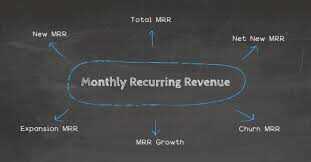Introduction
A recurring revenue model is a type of income model that describes the consistent stream of income that a business receives from charging customers periodically for a service or subscription. This is in contrast to a model in which a single payment is received for purchasing a single item. There are many potential sources of income that commercial enterprises and charitable organizations can tap. Depending on the circumstances, one-time events or recurring sales could contribute to this income. The former are the sales that are reliable, consistent, and repeated, which is what recurring revenue is made up of.
Because they occur at regular intervals, it is possible to plan for these earnings with some certainty because they can be anticipated. In the case of a company that operates based on a model based on recurring fees, most of an organization's revenue comes from its loyal customer base. In this particular scenario, customers pay for a specific service on a recurrent basis (on a monthly or yearly basis). Due to this model's high degree of predictability, businesses and companies stand to gain a great deal from utilizing it.

Examples of Recurring Revenue:
The payment schedule for apartment rent is typically every month. Paying a regular fee to receive a publication every month. The bills for the utilities are currently being paid. Fees must be paid on a recurring basis to use a service, such as a monthly subscription charge. This model is essential to most SaaS businesses' success because those businesses depend entirely on recurring revenue for their financial wellbeing.
How Is Recurring Revenue Used?
Businesses, business analysts, investors, and other parties have a significant interest in the revenue shown on the income statement. A company's revenues also referred to as the top line, are the primary factor determining the business's profitability. To determine a company's yearly net income, begin by deducting general and administrative expenses and tax payments from total revenue. Revenue from sales can be generated in a one-time lump sum or sustained and reliable over time (also known as "recurring revenue"). This type of income is essential to any company's success because it ensures a constant cash flow into the company.
An organization's top line can be broken down into two primary categories: one-time sales and the consistent flow of ongoing sales (recurring revenue). In the business world, there is a diverse range of possible approaches to generating recurring income. It is generally accepted that one of the most important indicators of a company's level of success is its capacity to generate new income streams over time consistently. On the other hand, there is no assurance that recurring income will continue indefinitely.
What Are The Types Of Recurring Revenue Business Models?
Hard contracts
Customers are provided with a service for a predetermined period at an agreed-upon cost throughout this business plan. It shields the company's income stream in the future from adverse events such as contract cancellations and other obstacles. Contracts for the provision of mobile phone service are an excellent example of this kind of arrangement. After the customer has signed the contract, they will be responsible for paying a predetermined monthly fee regardless of the number of text messages, phone calls, or data consumed during that period. When customers sign up for service with certain mobile phone companies, the monthly cost of the contract may, in some cases, include an additional one-time, nominal fee.
Sunk money consumables
Customers first make an initial purchase or investment in the platform and then make recurring payments to keep their access to the product or service after the initial transaction.
Recurring revenue formula
With the help of the recurring revenue formula, one can calculate monthly and annual recurring revenue for a recurring revenue stream. It is of the utmost importance that you use numbers appropriate for the period you are analyzing, whether that be a month, a quarter, or an entire year. The monthly subscription cost is arrived at by multiplying the typical amount of money made by each customer by the total number of people who subscribe (ARPU). Monthly recurring revenue can be calculated by multiplying the average revenue per user, also known as ARPU, by the total number of paid users.
Auto-Renewing Subscriptions
Evergreen subscriptions are yet another source of recurring revenue. The regular receipt of these payments is something businesses can count on receiving as long as their customers do not cancel their subscriptions. Monthly recurring revenue is a key metric for businesses that rely on subscriptions. This revenue is calculated by multiplying the total number of paying customers by the average revenue per customer (ARPU).
Uses of ARR

Quantifies The Company's Growth
The ARR is a dependable indicator of a company's development because of its consistency and predictability. A company can determine the direction it is heading toward success by analyzing its annual recurring revenue (ARR) over several years.
Evaluate The Success Of The Business Model
However, annual recurring revenue (ARR) only accounts for income from subscriptions, whereas total revenue considers all of a company's cash inflows. As a result, ARR enables a company to evaluate the potential success of its subscription business model.
Forecast Revenue
In a manner not dissimilar to that of MRR, ARR is frequently employed in revenue forecasting. It is common to practice using the metric as a jumping-off point when developing more complex models for revenue forecasting.
Conclusion:
Income can be generated in a business either from a single transaction or an ongoing stream of repeat business, referred to as recurring revenue. There is a significant variation in the characteristics of recurring income across different industries. Companies that can demonstrate consistent and ongoing sources of revenue are highly prized. Even if someone has a consistent income, this does not ensure they will live a long life.









